A thyristor will stay conducting until the current through the device is zero (“current zero”) or perhaps slightly negative. LLNL’s approach is to use the opticondistor (“OTV”) to force this current zero in order to force the device into an “off” state. By combining a light-activated thyristor with an OTV, a noise-immune, high efficiency, high-power switching device can be constructed. The…
Keywords
- Show all (208)
- Instrumentation (39)
- Additive Manufacturing (37)
- Sensors (16)
- Synthesis and Processing (16)
- Photoconductive Semiconductor Switches (PCSS) (9)
- Imaging Systems (8)
- 3D Printing (7)
- Materials for Energy Products (7)
- Carbon Utilization (6)
- Semiconductors (6)
- Compact Space Telescopes (5)
- Data Science (5)
- Laser Materials Processing (5)
- Cybersecurity (4)
- Diode Lasers (4)
- Material Design (4)
- Optical Switches (4)
- (-) Diagnostics (13)
- (-) Electric Grid (8)
- (-) Therapeutics (5)

The approach is to leverage the fact that a momentary “load” equal to the power transmission line impedance, (Z0), during the transient can suppress its propagation. Z(0) is typically a fixed impedance of several hundred ohms based on the geometry of most single wire transmission lines.
So, an isolated self-powered opticondistor (OTV) system may provide an ultrafast method of…

LLNL’s novel approach to enable MVDC power systems to operate safely is to develop a wideband gap bulk optical semiconductor switch (WBG BOSS) circuit breaker. For higher power, efficiency and temperature operation, vanadium-doped silicon carbide (V-doped SiC) appears to be the most promising basis for WBG BOSS circuit breaker (other dopants like aluminum, boron and nitrogen may further…
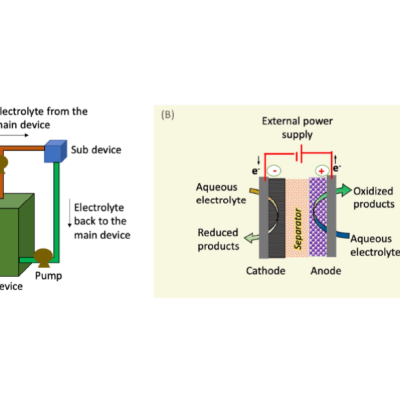
LLNL researchers has developed an approach to mitigate HER on the ‘plating’ electrode, which uses a sub-device as a rebalancing cell to restore electrolyte properties, including pH, conductivity, and capacity across the main device of the flow battery. This sub-device, which may need to be powered externally, has three major physical components: (1) a cathode electrode, (2) an anode electrode…

LLNL has developed a novel methodology for using commercially available automated sensors and actuators which can be deployed at scale in large appliances and plug-in EVs to provide as needed electric grid stabilization capabilities. The approach comprises of a population of voltage relays with a range of setpoints that would gradually reduce load as voltage falls. More severe voltage…

Improving the active material of the Zn anode is critical to improving the practicality of Zn-MnO2 battery technology. LLNL researchers have developed a new category of 3D structured Zn anode using a direct-ink writing (DIW) printing process to create innovative hierarchical architectures. The DIW ink, which is a gel-based mixture composed of zinc metal powder and organic binders, is extruded…
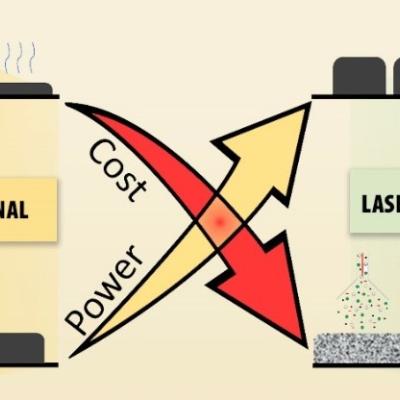
To address many of the aforementioned challenges of manufacturing LIBs and SSBs, LLNL researchers have developed a number of inventions that offer proposed solutions for their components:

To address shortcomings of current liposome drug delivery systems, the patented innovation uses drug-loaded liposomes containing carbon nanotube porins (CNTPs) inserted into the liposomal membranes for the delivery of the encapsulated drugs. Short CNTPs (10 nm in length) with narrow diameter (0.8 nm) has been demonstrated to facilitate efficient fusion of lipid bilayers resulting in the…
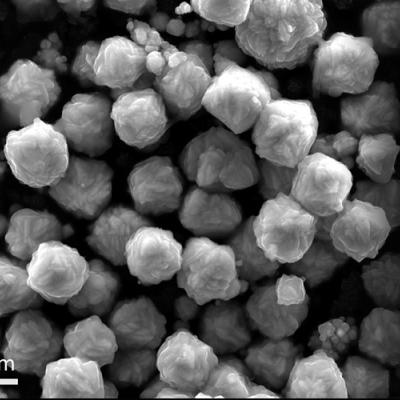
A new approach of developing synthetic antibacterial mineral assemblages can be used as an alternative treatment when traditional antibiotics fail in clinical and agricultural settings. Mineral mixtures can be synthesized with tunable metal release and reactive oxygen species generation that are capable of killing human pathogens and promoting wound healing. One of the key components in the…
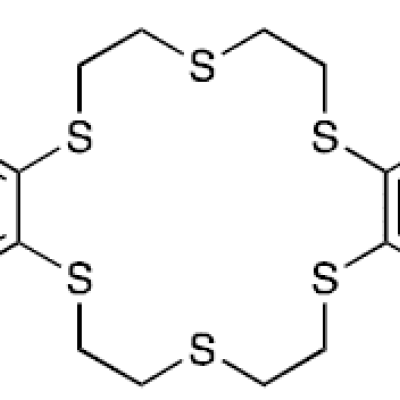
The method described in a pending patent application uses a novel thiacrown (dibenzohexathia-18-crown-6) for efficient extraction of 197m,gHg and 197gHg from irradiated Pt target foils. The separation of 197m,gHg and 197gHg from Pt foils using this novel thiacrown was found to be highly specific. No detectable amount of the Pt foil was seen in the…
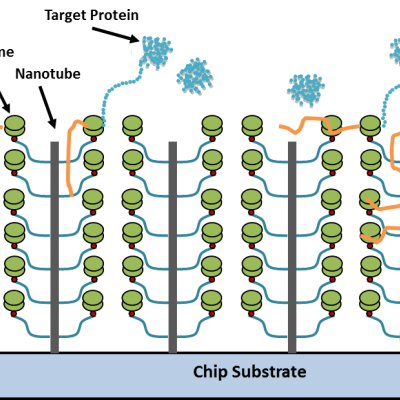
Combining the principles of nanotechnology, cell-free protein synthesis and microfluidics, LLNL researchers have developed a reusable, portable programmable system that can create purified, concentrated protein product in vitro in a microfluidic device containing nucleic acids.

Commercial fiber optic cables are the current standard for carrying optical signals in industries like communications or medical devices. However, the fibers are made of glass, which do not have favorable characteristics for applications that require flexibility and re-routing, e.g. typically brittle, limited selection of materials, dimension constraints.
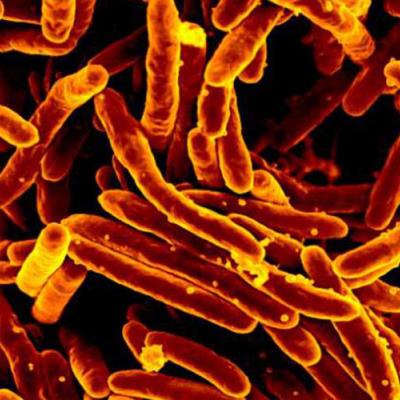
LLNL researchers have developed a high-volume, low-cost diagnostic test that is easy to use and provides results in under an hour. The testing platform will provide emergency responders and other medical professionals with the ability to screen individuals using oral and nasal samples, and obtain results in approximately 30 minutes. This point-of-care testing approach will enable rapid triage…

LLNL scientists developed novel hydrogels, which are biodegradable soft materials synthesized by a water-soluble polymer. Incorporating silver imparts antimicrobial activity to the material at low concentration compared to currently used silver nanoparticles. Our hydrogels are composed of silver ions instead of silver nanoparticles, which eliminates the toxicity concerns of modern silver…
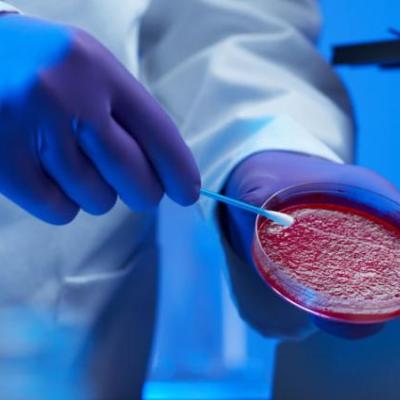
LLNL researchers have invented a system for identifying all known and unknown pathogenic or non-pathogenic organisms in a sample. This invention takes a complex sample and generates droplets from it. The droplets consist of sub-nanoliter volume reactors which contain the organism sized particles. A lysis device lyses the organisms and releases the nucleic acids. An amplifier then magnifies the…
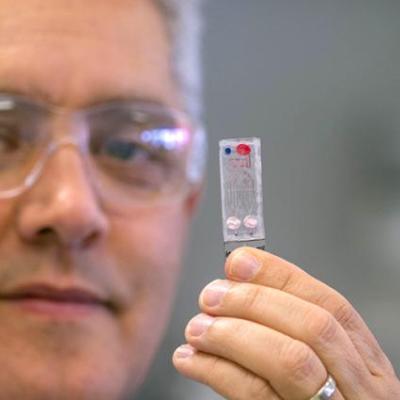
LLNL researchers have developed a portable device which analyzes one or multiple types of body fluids or gases to test for one or more medical conditions. A bodily fluid (such as blood, perspiration, saliva, breath, or urine) is put into a condenser surface and is then separated into both a primarily gas fluid component and a second one that is primarily liquid. These two samples from the same…
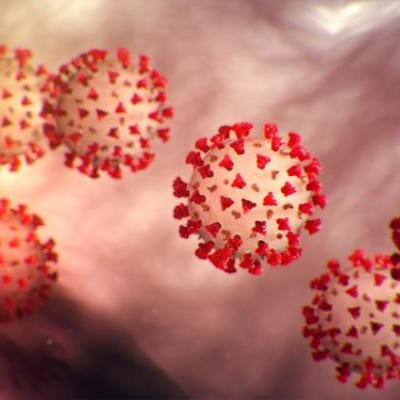
LLNL researchers have developed a method to quickly and accurately identify the family of a virus infecting a vertebrate via PCR. Universal primer sets consisting of short nucleic acid strands of 7 to 30 base pairs in length were created to amplify target sequences of viral DNA or RNA. These primers can amplify certain identifying sequences of all viral genomes sequenced to date as well as…
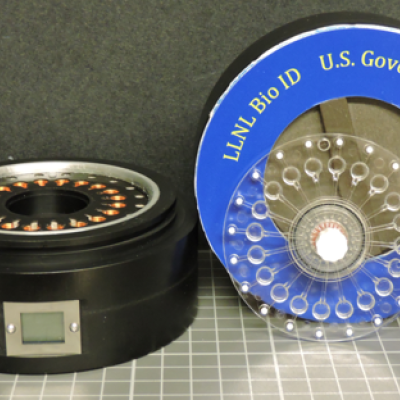
LLNL scientists have developed a battery-powered device which is low-cost and multi-chambered for the extraction and amplification of nucleic acids from environmental, clinical, and laboratory samples via loop-mediated isothermal amplification (LAMP). This platform identifies pathogenic bacteria and assists in determining the optimal treatment plan. A multi-chamber amplification cartridge in…
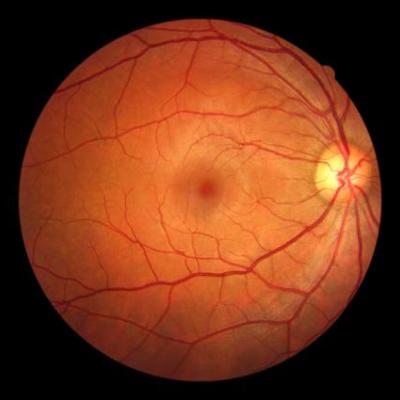
LLNL scientists have developed a method to ensure the accuracy of that tomographic image by applying adaptive optics (AO) to OCT in a single instrument (AO-OCT). AO stabilizes the image being captured by the OCT device by utilizing a Hartmann-Shack wavefront sensor and a deformable mirror, a type of mirror designed to compensate for detected waveform abnormalities (such as ones caused by a…
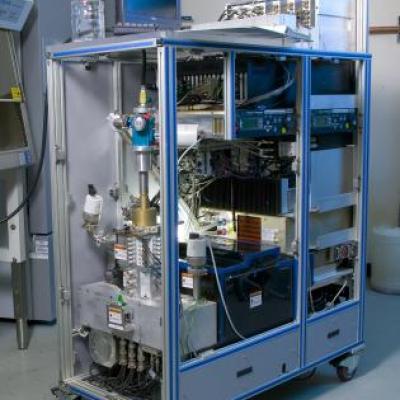
LLNL scientists have created a standalone pathogen identifier that can be placed in public settings, such as in stores or on street corners. Not unlike an ATM in physical size, this kiosk will accept biological samples from an individual for multiplexed analysis. The sample collection process will be sufficiently simple such that anyone could begin the diagnostic process after making the…

LNLL scientists have invented a method for multiplexed detection of PCR amplified products which can be completed in a single step. Highly validated species-specific primer sets are used to simultaneously amplify multiple diagnostic regions unique to each individual pathogen. Resolution of the mix of amplified products is achieved by PCR product hybridization to corresponding probe sequences,…

This LLNL-developed invention is multiplexed and utilizes the Luminex bead-based liquid array, which contains 100 different unique beads. Oligonucleotide probes with sequences complementary to the target sequences are covalently coupled to these unique beads. These capture beads are mixed with viral samples obtained from the patient via cheek swabbing or a throat wash and subjected to PCR in a…

LLNL scientists have developed a high-confidence, real-time multiplexed reverse transcriptase PCR (RT-PCR) rule-out assay for foot and mouth disease virus (FMDV). It utilizes RT-PCR to amplify both DNA and RNA viruses in a single assay to detect FMDV as well as rule out other viruses that cause symptoms in livestock indistinguishable from those caused by FMDV, such as Bovine Herpes Virus-1 (…

The design calculations that have been performed in exploring the potentialities of LLNL's new approaches to flywheel energy storage have been built on existing and past LLNL flywheel programs, including a program aimed at flywheel systems for the bulk storage of electricity at utility scale. To achieve the requirements of such systems, as mentioned above, LLNL has developed some key new…

Using various excitation wavelengths, a hyperspectral microscope takes advantage of autofluorescence and polarized light scattering from cellular components to obtain composite images that highlight their presence. The light collection efficiency is maximized to achieve image acquisition times and rates suitable for in vivo applications.

The patented intracranial hematoma detection technology uses Micropower Impulse Radar (MIR). MIR uses short, high frequency electromagnetic pulses to obtain information in a non-invasive manner. Unlike ultrasound and other electromagnetic techniques, MIR can operate well through the skull, which is of great importance for intracerebral as well as epidural and subdural hematomas. The MIR…

